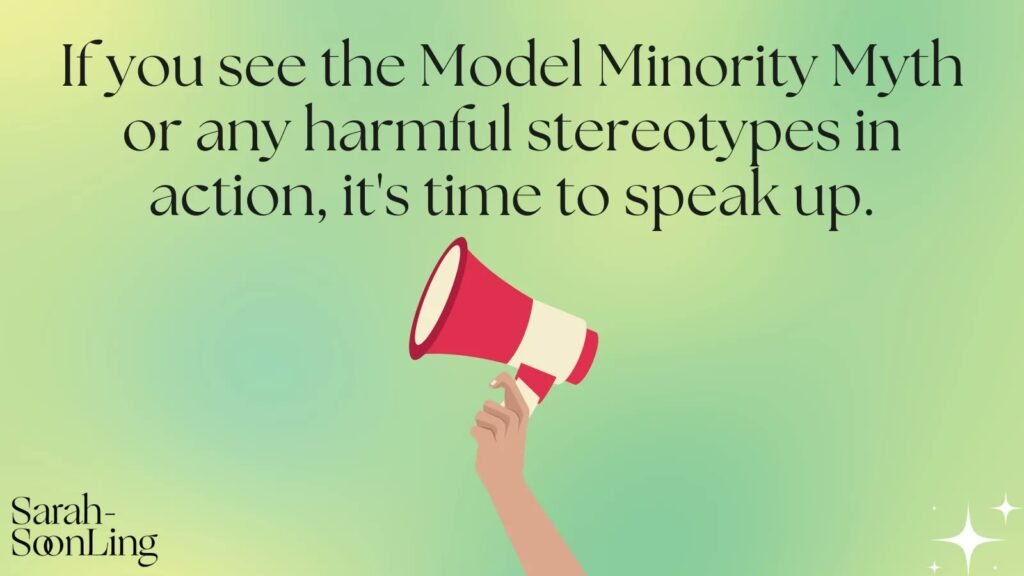This virtual live interview was conducted on December 10, 2022, by Sahasra Tummala and Sreeja Surisetti with Dr. Sarah-SoonLing Blackburn and transcribed by Sreeja Surisetti.
Sahasra Tummala: Do you believe parental pressure, a common subject of satires regarding being Asian-American, contributes to the model minority myth?
Yes, it’s two parts. One, it’s a perception of like “Oh, grades above anything because of parent pressure.” For example, in East Asian families, it’s the Tiger Mom stereotype. And two, there is actually some reality to it. A lot of times, our parents’ generation was told that this is the way for your child to gain acceptance in this country. So, the model minority myth is not just something that exists in the United States but around the world.
My mom’s from Malaysia, and my family in Malaysia receives the same messages that everyone else and the same media that everyone else sees. American media is global media. American pop culture is global pop culture. So, they’re receiving these messages of, “Ok, if you go to the US and you behave in this way, you will be accepted, and you will be successful.” So then, there’s much pressure on parents because they want their kids to do well and feel that they need to enforce those things on their kids. After all, they see that this is their only pathway.
I’ve come to realize how false it is too because my mom did that a lot with me. As I said, she yelled at me a lot about not doing good in math and science classes. My mother is a historian. I told her I wanted to be a teacher. My mother’s response was, “No, you can’t be a teacher”, even though she is a teacher. She was so worried about my success that she enforced the model minority stereotypes. It gets perpetuated inside households too because we don’t necessarily have a lot of other models of what it looks like to be okay and successful in the United States.
That’s a dynamic many teachers don’t understand if they never lived through it themselves – that pressure that comes along with immigration stories. If you have parents who left a country to try to make a life here or their parents here, there is so much fear. They have up a lot to try to make a better life for their family, so they are going to do whatever it takes to make that true, even if it does not necessarily drive with their own beliefs or understandings sometimes.
Sahasra Tummala: For our last question, what would you say to someone subject to the model minority myth?
I think I would lead with curiosity and try to get them to self-identify or explain what’s happening. There is certainly some shame that comes along with this. For example, feeling like you are not good enough is a really awful hard feeling to feel. If you do not feel like you are within the requirements of being a good Asian, you can feel like you don’t belong, and that’s a very hard emotion. So, I want to talk to that person about those feelings before getting into the model minority stereotype. The model minority myth is not very comforting if you are in this emotional place. However, I do think it is important to help the individual learn about the model minority myth themselves and come to the realization that this is a socially constructed stereotype and that they have so much to offer on their own. It’s been really empowering for me to research, follow social media accounts, do a lot of reading, and look at data tables because that reminds me that the model minority myth is socially constructed. Even though I write and talk about this, I still feel the effects a lot of times. Sometimes, I still feel like I am not a good Asian, so I have to keep reminding myself and building that armor. I think that projects like this one can really help people steer away from projecting the model minority’s expectations onto themselves.
Sahasra Tummala: Can you please share with our audience where they can find you to view your projects and works?
Yeah! So you can find me on social media @SarahSoonLing on everything. I’m not as active on Twitter anymore, but Instagram, for sure. I know you’re getting to an age where LinkedIn might become a larger platform for you. You might not be there yet, but as you get into college and start looking into careers, that’s where most of my material is. I have a couple of LinkedIn learning courses. I also have a book coming out, probably in 2024, about the history of Chinese Americans for middle grades and young adult audiences, so that will be a source. And just be in touch! My website is sarahsoonling.com. Reach out to me, and send me a message. I’m happy to talk.
Sreeja Surisetti: Thank you so much! We really appreciate your time and responses! Is there anything else you would like to say to wrap it up?
Thank you again, and just keep us this work because this project really matters!
